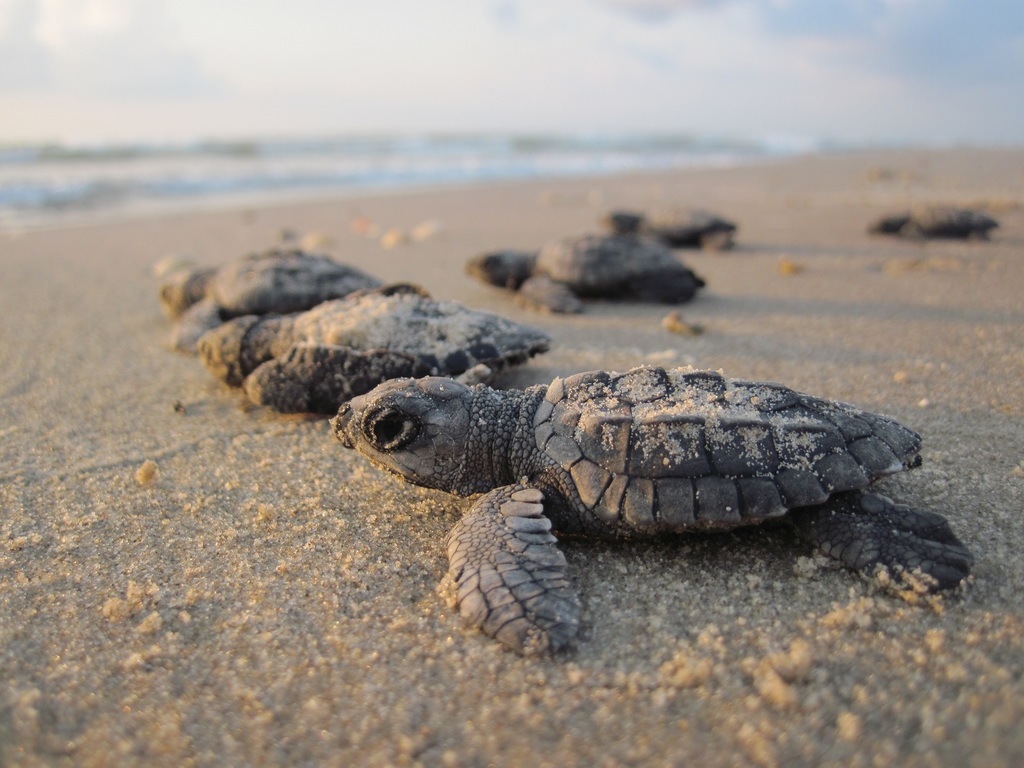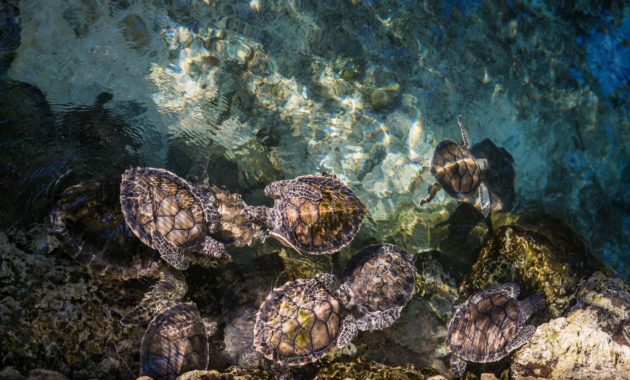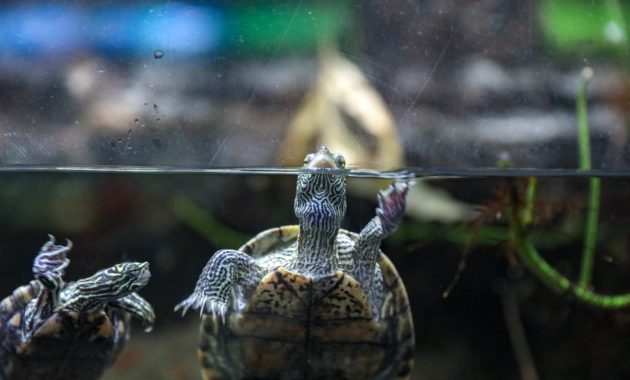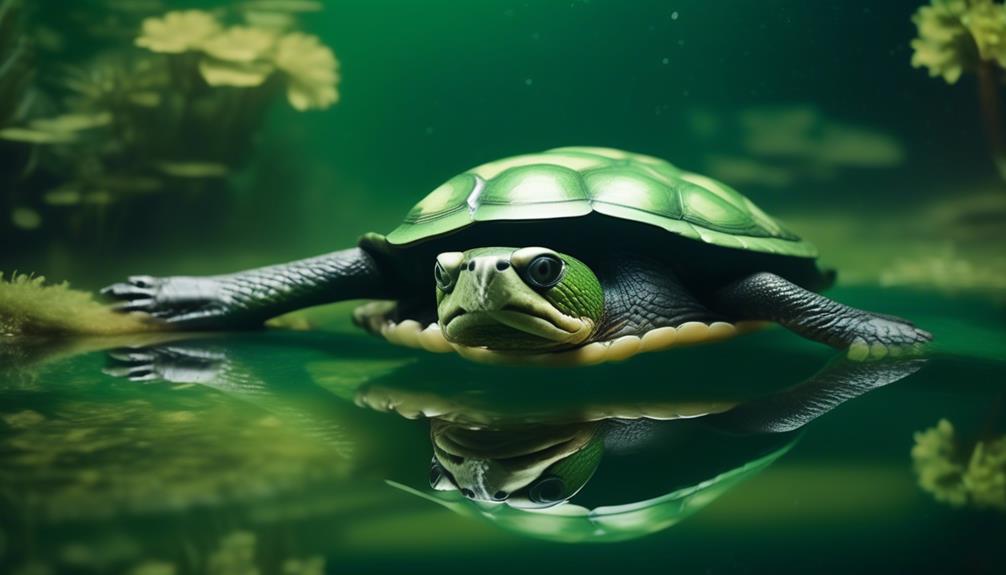
Have you ever come across a creature that glides through the water with the grace of a swan, its elongated neck curving like a gentle wave?
Prepare to be captivated by the Argentine Snake-Necked Turtle, a mysterious aquatic marvel that holds secrets waiting to be uncovered. With its unique physical features and intriguing behavior, this enigmatic creature has long fascinated scientists and nature enthusiasts alike.
From its delicate scales to its elusive nature, there is much to discover about this elusive reptile. So, let us embark on a fascinating journey into the depths of the Argentine Snake-Necked Turtle’s world, where the wonders of the unknown await.
Key Takeaways
- The Argentine Snake-Necked Turtle has an oval and flattened carapace with a smooth or knobbed surface.
- Females tend to grow larger than males and they have long necks used to capture fish, insects, and worms.
- They have a lifespan of over 30 years and require a high level of maintenance and an advanced understanding of their habitat and behavior.
- They are native to Uruguay, southern Brazil, Paraguay, and northern Argentina and are found in rivers, marshes, streams, and ponds with aquatic vegetation.
Description and Characteristics
The Argentine Snake-Necked Turtle is a small to medium-sized aquatic reptile with distinct characteristics. It has an oval and flattened carapace with a smooth or knobbed surface. Its head is moderate in size with a slightly protruding snout. The front limbs and hind legs have transverse scales and each foot has four claws.
Females of this species tend to grow larger than males. One of their most notable features is their long necks, which they use to capture fish, insects, and worms.
In terms of lifespan and care, these turtles can live for over 30 years but require a high level of maintenance. They’re shy and finicky eaters and don’t bask regularly, only going on land for specific reasons.
Lifespan and Care

Taking care of the Argentine Snake-Necked Turtle requires a high level of maintenance and attention to detail. Here are some key points to consider when caring for these mysterious creatures:
- Lifespan of 30+ years: Be prepared for a long-term commitment when deciding to care for these turtles.
- High maintenance in terms of care: These turtles require specialized care and a well-maintained environment.
- Requires advanced level of care: Due to their specific needs, it’s important to have a good understanding of their habitat and behavior.
- Shy and finicky eaters: Providing a varied diet and ensuring they have a comfortable feeding area is crucial to their well-being.
Native Habitat

When caring for the Argentine Snake-Necked Turtle, understanding their native habitat is essential for creating an environment that meets their specific needs.
These mysterious creatures are found in Uruguay, southern Brazil, Paraguay, and northern Argentina. They prefer rivers, marshes, streams, and ponds with aquatic vegetation. In coastal areas, they can even be found in brackish water.
It’s important to note that they hibernate in cooler areas within their range.
To mimic their natural habitat, provide a large enclosure with deep water and ample aquatic vegetation. Additionally, include a basking area, UVB light, and a heat lamp.
Colors and Environment
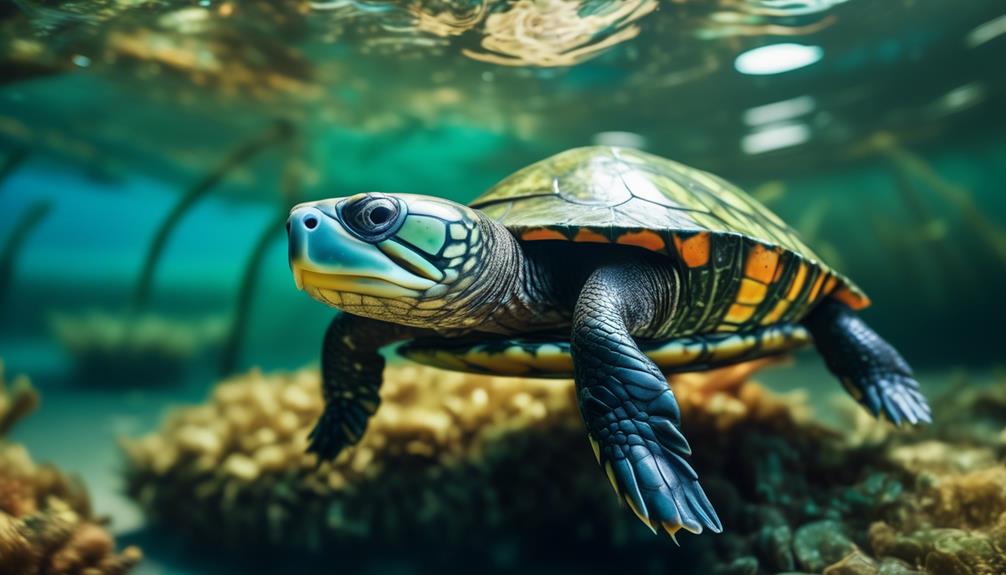
To create an optimal environment for the Argentine Snake-Necked Turtle, it’s important to consider their distinct colors and their specific habitat requirements. Here is a glimpse of how these turtles look and what their environment should be like:
- Carapace: Dark brown with speckles, bridge can be brown or yellow with blotches.
- Plastron: Pattern and color vary, can be yellow or yellow with brown blotches.
- Head: Gray to olive with a cream or white stripe bordered with gray or black.
- Jaws and underside of chin: Tan or yellow, with dark lines or spots.
To meet their needs, the Argentine Snake-Necked Turtle requires a large enclosure with deep water, a basking area, UVB light, and a heat lamp. Providing these elements will help replicate their natural habitat, which consists of rivers, marshes, streams, and ponds with aquatic vegetation.
Comparison With Brazilian Snake-Necked Turtle

Now let’s explore how the Argentine Snake-Necked Turtle compares to its counterpart, the Brazilian Snake-Necked Turtle. Both turtles share similar characteristics, such as their small to medium size, aquatic nature, and oval and flattened carapace. However, there are some notable differences between them. While the Argentine Snake-Necked Turtle has a dark brown carapace with speckles and a gray to olive head, the Brazilian Snake-Necked Turtle has a lighter brown carapace and a more vibrant head coloration. In terms of habitat, the Argentine turtle is found in Uruguay, southern Brazil, Paraguay, and northern Argentina, while the Brazilian turtle is native to Brazil. Additionally, the Argentine turtle hibernates in cooler areas within its range, whereas the Brazilian turtle does not. Despite these differences, both turtles require a similar level of care and attention.
| Argentine Snake-Necked Turtle | Brazilian Snake-Necked Turtle |
|---|---|
| Dark brown carapace with speckles | Lighter brown carapace |
| Gray to olive head | Vibrant head coloration |
| Found in Uruguay, southern Brazil, Paraguay, and northern Argentina | Native to Brazil |
| Hibernates in cooler areas within its range | Does not hibernate |
| Requires similar level of care and attention | Requires similar level of care and attention |
Frequently Asked Questions
What Are the Specific Dietary Requirements of the Argentine Snake-Necked Turtle?
The Argentine Snake-Necked Turtle has specific dietary requirements. It primarily feeds on fish, insects, and worms. Make sure to provide a varied diet to meet its needs and keep it healthy.
How Often Should the Water in the Enclosure Be Changed for the Argentine Snake-Necked Turtle?
You should change the water in the enclosure for your Argentine Snake-Necked Turtle about once a week to maintain cleanliness and ensure the health of your turtle.
Can the Argentine Snake-Necked Turtle Be Kept as a Pet in a Small Tank or Aquarium?
No, the Argentine Snake-Necked Turtle cannot be kept as a pet in a small tank or aquarium. They require a large enclosure with deep water, a basking area, UVB light, and a heat lamp for their well-being.
What Is the Average Size of an Adult Argentine Snake-Necked Turtle?
The average size of an adult Argentine Snake-Necked Turtle is small to medium. They have oval and flattened carapaces, with females growing larger than males. These turtles are known for their long necks and capturing fish, insects, and worms.
Are There Any Specific Behaviors or Habits That Are Unique to the Argentine Snake-Necked Turtle?
The Argentine Snake-Necked Turtle has unique behaviors and habits. It has a long neck for capturing fish, insects, and worms. It doesn’t bask regularly and only goes on land for specific reasons.
What Makes the Foul-Smelling Stinkpot Turtle a Fascinating Aquatic Creature?
The fascinating aquatic stinkpot turtle is an intriguing creature due to its ability to release a foul-smelling musk as a defense mechanism. Despite its off-putting odor, this species plays a crucial role in aquatic ecosystems and its unique traits make it a subject of fascination among researchers and enthusiasts alike.
Conclusion
In conclusion, the Argentine Snake-Necked Turtle is a fascinating and mysterious creature that inhabits the waters of Uruguay, southern Brazil, Paraguay, and northern Argentina. With its unique appearance and skillful hunting techniques, this turtle captures the attention of anyone lucky enough to witness it in its natural habitat.
However, its care requires careful attention due to its shy and finicky eating habits.
Overall, the Argentine Snake-Necked Turtle is a captivating creature that adds to the beauty and diversity of our aquatic ecosystems.

